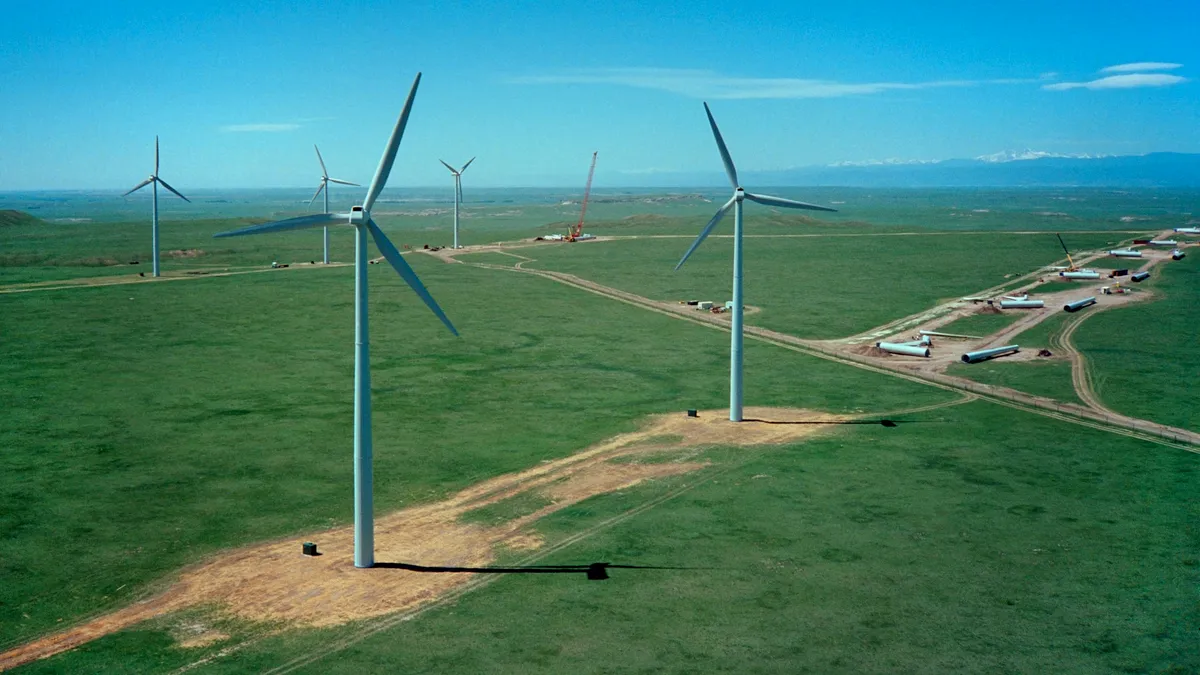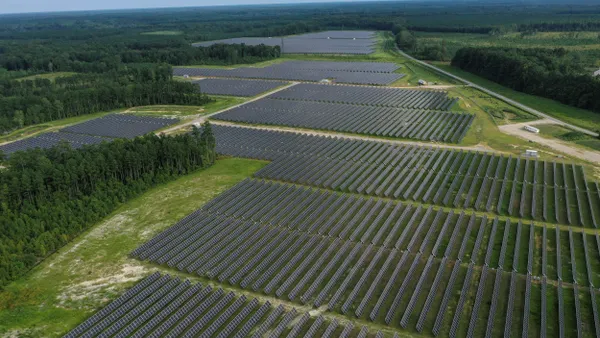Dive Brief:
-
The average price of power purchase agreements for wind projects in North America dropped 1.9% in the final quarter of 2022, the first price decline in two years, according to renewable energy marketplace LevelTen Energy.
-
Although wind markets seem to be reaping the benefits of new, stabilized incentives from the Inflation Reduction Act, prices for solar PPAs rose 8.2% during the fourth quarter. Solar PPA prices rose 33% over the past year.
-
Ongoing supply chain challenges, concerns about forced labor and interconnection delays continue to impact solar developers and raise questions about whether the IRA alone will be enough to bring solar costs back to pre-Covid levels, according to Gia Clark, senior director of developer services at LevelTen
Dive Insight:
Price data from the final months of 2022 suggest wind—not solar—may be the biggest immediate beneficiary of the IRA.
In addition to the slight dip in price quotes for wind PPAs, the number of wind PPAs on the market has grown as projects that were stuck on the sidelines due to uncertainty about incentives and financing re-enter the game, Clark said. “This is our first initial data point that is starting to say, something is starting to happen, something is starting to get unlocked,” she said.
Solar is a different story. Although the IRA has increased demand for solar and for domestic solar manufacturing, ongoing supply chain bottlenecks continue to drive up prices. The number and pace of manufacturing announcements in recent months are “very exciting,” Clark said, “but you have to think about what we are going to build, and how quickly we can do it.”
There’s also the reality, Clark said, that the solar industry may be due for a reckoning in terms of what it will cost to build equipment in the U.S. Some of the decline in solar equipment and installation costs over the past decades has been a result of policy—and labor policy—decisions made in China that include the use of forced labor, she said.
“What we are looking at with solar and wind to a certain extent is trying to understand the true cost of power with equipment that wasn’t made by forced labor,” she said.
Solar has also been disproportionately impacted by ongoing interconnection logjams. Solar projects tend to be more numerous and relatively younger than wind projects, which means solar overall is less likely to enjoy favorable positions in interconnection queues, Clark said. But wind isn’t entirely immune to delays and increased costs triggered by long interconnection study times. Wind prices ticked up 4% in the PJM market, which Clark said has some of the worst interconnection delays. Proposals for contracts on solar projects in the same market jumped 14.5% in the last quarter.
The reality, Clark said, is it may not be possible for renewable energy prices to return to their pre-2020 levels. And it’s going to take some time to determine whether the dip in wind prices is a sign of trends to come, or temporary.
“There’s no silver bullet to this. We have to come at it from a bunch of different sides,”Clark said. “The IRA should not be discounted, it’s significant, but it alone can’t solve the pretty complicated challenges of our grid supply and a just energy transition.”














